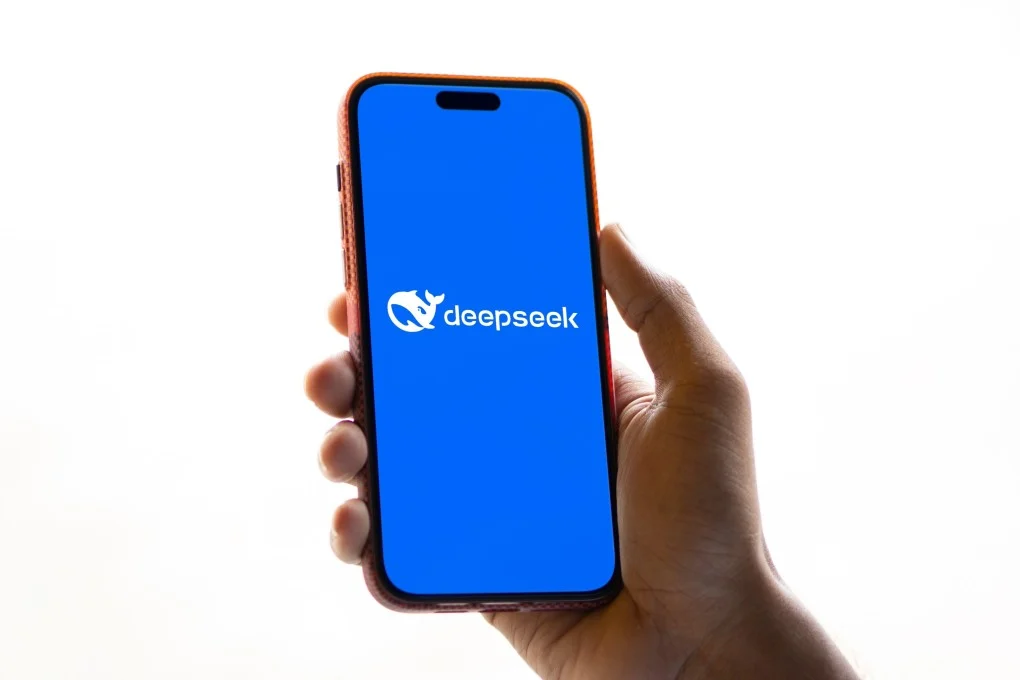AI development has been accelerating at a pretty impressive rate, but most of it seemed to be happening in the West. No longer: High-Flyer, a Chinese hedge fund, just dropped the first fully domestic AI-powered chatbot, and it just leapfrogged OpenAI, META, and Google.
DeepSeek R1 hasn’t just changed the game; it’s decimated the entire board. It’s performing just as well, if not better, than anything on the other side of the Pacific, at a fraction of the cost, with older chips. With shockwaves reverberating through the stock market and billionaires scrambling to meet the challenge, let’s take a look at how good DeepSeek really is, how it compares to Open AI’s latest chatbot, and how it’s revolutionizing the way we look at artificial intelligence.
DeepSeek: The New Kid on The Block
For the most part, DeepSeek performs all of the same tasks that the latest version of OpenAIs ChatGPT does. It’s a pre-trained, reasoning-based chatbot that produces incremental responses and actually gives more nuanced responses than other free, open-source chatbots available right now.
While the world needs more time to evaluate whether the model is definitively superior to GPT 4o, initial tests show DeepSeek outperforms in math and coding-based tasks. However, initial tests also put DeepSeek higher than o3-mini, the second-best LLM OpenAI has to offer. It’s important to stress here that DeepSeek isn’t particularly groundbreaking in its performance, and that was never the goal. It just had to perform as well as its American counterparts.
The world is shocked at how little memory the model uses. That means it costs exponentially less per response than its competitors, and to top it off, DeepSeek was developed using
$6 million compared to $100 million+ budget for OpenAI’s 4o. This isn’t the first time we’ve had an open-source AI chatbot that shocked the big players in the market, but none of those companies had the performance or the backing DeepSeek seems to have.
Who’s Behind DeepSeek?
Alarmists and Western propagandists would have you believe the Chinese government may have developed DeepSeek themselves, but of course that’s far from the truth. The model is the result of an overall shift in Chinese economic mindset: They’ve been trying to move away from cheap manufacturing as their core offering on the global stage and increase their focus on technology, AI, and advanced hardware.
Liang Wenfeng’s hedge fund, High-Flyer, has been deeply entrenched in AI for years. They use AI-based predictive models to play the stock market. Their quantitative trading mechanisms were most likely the inspiration for DeepSeek, and the company was born in 2023. Their first model came just a year after their launch, but it got nowhere close to the attention that R1 model has gotten.
The Chinese march towards AI excellence
The launch of DeepSeek is symbolic of China’s commitment to ‘Innovation 2.0’. The country’s young generation of entrepreneurs has been pushing for homegrown technologies for years now. According to Wenfeng, the surprise in the West isn’t rooted in the performance of DeepSeek r1, no matter how good it may be. He said. "Often, we say there's a one or two-year gap between Chinese and American AI, but the real gap is between originality and imitation. If this doesn't change, China will always be a follower."
Wenfeng carries this attitude across all his ventures. His hedge fund was the first quantitative hedge fund that crossed the 100 billion yuan mark, and his response at the announcement was, "If the US can develop its quantitative trading sector, why not China?" Wenfeng has never been satisfied by following along with the West and believes Chinese leadership in technology depends on the country's ability to innovate, not just perfect or mimic.
However, many critics are skeptical about the true performance and development costs of DeepSeek. They argue that the model used pre-existing chatbots like ChatGPT to train itself, which is why they’re costs are so low. Of course, this doesn’t discount the genius behind squeezing every ounce of performance from old NVIDIA chips. For the moment, how High-Flyer got there isn’t as important as the performance of the bot itself, so let’s take a closer look at DeepSeek’s behaviour.
DeepSeeks Journey and Performance
In the simplest of terms, DeepSeek feels just like any other chatbot developed in the west, except for the fact that it’s a bit more chatty. The bot makes the effort to comment on the validity of a requested opinion, adding nuance to the discussion with phrases like ‘it’s a highly subjective topic’, and doesn’t really respond to questions about it’s performance compared to OpenAI’s chatbots.
At the moment, the site only has access to information up until October 2023. That’s a pretty similar cut-off compared to the first versions of ChatGPT, likely an attempt to limit inaccurate responses influenced by misinformation spread on the web in real time. If you’re going to the DeepSeek website and aren’t able to use the bot and check its performance for yourself, don’t be upset. The site is currently flooded with users worldwide, much like the days following ChatGPT’s launch. With proper traffic management, the bot boasts an impressively quick response time of half a second.
It’s unfair, at the moment, to judge DeepSeek on pure performance. The fact that you won’t feel much difference to other free chatbots on the market should be considered a success in and of itself. However, DeepSeek isn’t as independently developed as some people would have you believe.
DeepSeek uses NVIDIA chips, albeit older models, likely using OpenAI data for training, and is built on META’s Llama infrastructure and AliBaba’s Qwen. These are all effective cost-cutting measures that have allowed DeepSeek to compete at the top, but it signifies the company's reliance on foreign technology. Depending on how well the bot performs in the next year, their approach could prove you don’t need billions to develop AI bots and shift the whole paradigm.
Censorship on DeepSeek
China and online censorship go hand-in-hand, even with the supposed decrease in online government interventions in recent years. Technology companies work extremely closely with the government, which inevitably influences their censorship and privacy regulations. Sadly, DeepSeek is not an exception to this rule. The bot doesn’t engage in discussions that are banned in mainland China.
Responses to 'restricted’ questions range from the screen going blank in the middle of generating a response and asking the user to ‘talk about something else’, to a refusal to engage in politically sensitive or harmful discussions. A prominent example of the kind of information the bot censors are questions on the Tiananmen Square Protests and the shortages of food and medicine during the COVID-19 lockdown. However, despite these obvious restrictions, experts are suggesting that the government has been generally ‘hands’off’ with DeepSeek, only implementing the information restrictions already in place.
Comparing DeepSeek and ChatGPT
DeepSeek has broken all previous records of downloads in the first day and the first week on the AppStore. People desperately want to experience the differences between the two behemoth chatbots for themselves. We went through some subtle differences in style and nuance above, but this section aims to compare the two chatbots on a more granular level, based on tasks people are most likely to use the platforms for.
Writing Assistance
Text generation and linguistic assistance are by far the most commonly used applications of AI chatbots, so it’s natural to start our comparisons here. There are hundreds of online reviews where people gave both bots the exact same prompt and instructions and compared their responses. For the most part, DeepSeek performs just as well as ChatGPT in simple text generation.
That’s to say, if you were to ask both bots to write an article on the best science-fiction movies of all time, you’ll get a pretty identical list. The only major difference is that DeepSeek tends to ramble about its thought process more than OpenAI. It tends to explain why it made certain choices, which can be a good or bad thing depending on how interested you are in the bots mechanisms.
Coding
Text generation may be the bread and butter of chatbots, but assisting in coding-based tasks or writing code from scratch is where they excelled. In the few short years since AI chatbots have been publicly available, they’ve become an indispensable tool for coders all over the world. Through sheer luck or design, DeepSeek seems to be outperforming even the latest bots OpenAI has to offer.
Coders online have tried giving both bots identical yet incredibly complex coding tasks DeepSeek consistently outperforms its American competitor. In fact, DeepSeek has already replaced ChatGPT as one half of the ultimate coding-assistant pair. Computer science engineers have taken to Twitter and Reddit to say DeepSeek and Anthropic’s (owned by Amazon) Claude Sonnet are by far the best coding assistants on the market.
Creativity and Brainstorming
The ultimate Turing test for chatbots is their creativity, and it’s safe to say no chatbot is going to be producing sonnets in the iambic pentameter anytime soon. However, DeepSeek and ChatGPT take different approaches to creative tasks altogether. We tested this ourselves by asking both DeepSeek and ChatGPT to brainstorm a few ideas about children’s books that take place in space.
Both boys took comparable times to respond, but ChatGPT gave more responses. The OpenAI champion provided 6 ideas of equal length but only gave outlines for each. DeepSeek, on the other hand, chose a single idea and wrote a simple story 400 words long. Considering those weren’t the explicit instructions in the prompt, ChatGPT seems to be the more creative bot for now.
Research and History
Students love using AI for their homework, and why shouldn’t they? Both DeepSeek and OpenAI gave historically accurate accounts of historical events that weren’t sensitive or controversial in nature. While Google’s Gemini is the clear winner for this category because of the reference links it provides in its responses, ChatGPT seemed to have a slight edge over DeepSeek.
While the Chinese bot recalled just as many events and points as ChatGPT, it didn’t give as much detail about those events as ChatGPT. Additionally, when we take into account the censorship issues DeepSeek has with Chinese history and political events, OpenAI takes the victory in this category.
Mathematical Computations
Other than its success in coding, DeepSeek's greatest strength is how much better it is at math. The latest version of ChatGPT doesn’t even come close, but to be fair, the model isn’t built for math problems because it isn’t a reasoning-based model in the first place. Instead, OpenAI developed WolframGPT, but even that can’t beat DeepSeek in complex mathematical problems. While the Chinese model does struggle with creating some simple proofs, it feels more like a big issue that will be fixed in the first update rather than a core issue that needs to be addressed in later versions.
In less than a week, DeepSeek has completely transformed the AI landscape of the world. Companies have lost billions in valuation, users have more options, and the world now has a successful open source AI that’s bound to accelerate the advent of AGI. We’re all set for another tech race in 2025, and we’ll just have to wait and see who comes out on top.







